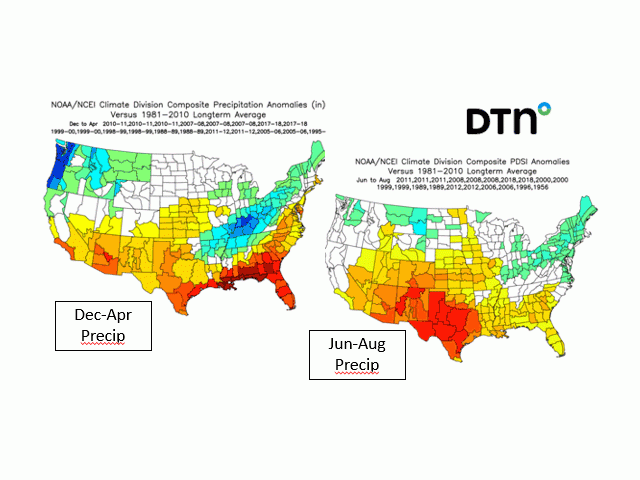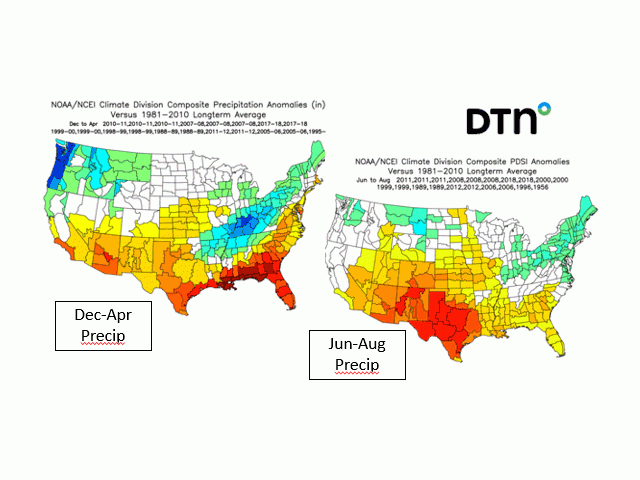Ag Weather Forum
Analogs Indicate Dry Summer
One of the input items in generating a long-range weather forecast is the contribution of analog years. These are years when atmospheric and ocean conditions were similar to conditions going into the forecast timeframe in question. They are in some ways akin to historical track records of investment performance. And, as in past investment performance, the analog years do not automatically indicate what the upcoming forecast period will be like. Nonetheless, the analog years can give some idea of what to expect. And in the upcoming crop year 2021, there are some adverse conditions noted.
For the analog years ahead of 2021, one of the main preliminary features is the presence of La Nina in the Pacific Ocean. Other items analyzed are the Pacific Decadal Oscillation (PDO), the Atlantic Multi-Decadal Oscillation (AMO), and a feature known as the Quasi-Biennial Oscillation (QBO). These values are normalized and compared to both observations from the past three months and forecast details for the next six months for each of these features. There is also a spreadsheet calculation done to select the closest years to what is seen at the present time. After the formulas have done their work, our forecasters do personal analysis and filter out the outlier years. La Nina is a key item in working through the analog year array for 2021. Those La Nina years include 2010-12; 2007-08; 1988-2000; 2005-06; 1988-89; 2017-18; and 1995-96.
With that setting the stage, here are the features that our DTN long-range forecast group is expecting for 2021:
--Cold risks for the latter half of the winter, mainly in the northwest and north-central regions of the contiguous U.S.;
P[L1] D[0x0] M[300x250] OOP[F] ADUNIT[] T[]
--Dry south/wetter north for winter;
--A key feature for crops -- dry signal for the spring and summer in the central U.S. with wetter conditions in the East;
--For the spring season -- severe weather risks higher due to a stronger upper jet, good low-level jet and cold northwest/warm southeast temperature pattern similar to more active years.
These suggested features call to mind the harsh extreme weather season of 2011 following the establishment of La Nina in August-September 2010. (And in fact, the 2010-11 time frame has the highest correlation to conditions we see now.)
The following winter was cold and snowy over many northern and central areas. Then, the late winter and spring featured some devastating tornado outbreaks. Examples include a rash of tornadoes in the southeastern U.S. and in the southern Midwest during the spring season. The year also brought heavy rain, delays in fieldwork and planting and prevented planting to the Midwest. And a combination of heavy snowpack and heavy spring rain brought on season-long flooding in the Missouri River valley.
Prevented planting acreage hit a then-record of more than 10 million acres.
In contrast, 2011 brought devastating drought to the Southern Plains. Crop yields were down. Pasture and hay supplies dried up. Forced cow herd dispersions were widespread. A packing plant in the Texas Panhandle even closed due to supply issues caused by drought.
So, while analogs do not constitute a total forecast, they do offer suggestions about what "could" happen. And those indications are sobering for 2021.
Bryce Anderson can be reached at Bryce.anderson@dtn.com
Follow him on Twitter @BAndersonDTN
(c) Copyright 2020 DTN, LLC. All rights reserved.






Comments
To comment, please Log In or Join our Community .